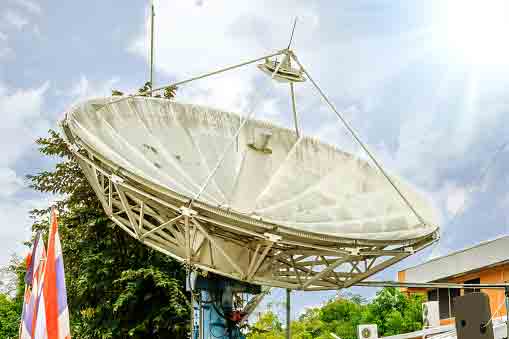C-Band Operators Band Together to Push Secondary-Market Proposal

The satellite operators providing the majority of C-band satellite services to U.S. customers have banded together to create the C-Band Alliance, which will advocate for their proposal to clear portions of the band for 5G wireless while pledging to protect the broadcasters, cable operators and others who currently use the band.
The C-band is currently used for satellite delivery of cable and broadcast network programming to TV and radio stations and cable head-ends. The FCC wants to open it up to wireless broadband to help close the digital divide and promote 5G, both prime directives for the commission.
Related: NBA Says C-Band Sharing Isn't a Given
The FCC voted unanimously in July to find ways to open up the C-band spectrum (3.7-4.2 Ghz) for terrestrial wireless use, either all of the 500 Mhz or some portion of it, and through either an incentive or capacity auction, a market mechanism where incumbents voluntarily strike deals to reduce their footprint--the alliance's proposal--or some other means.
Related: FCC Opens Door to C-Band Sharing, Auction
The alliance, which comprises Intelsat, SES, Eutelsat and Telesat--says it will strike secondary market deals for the spectrum within three years of an FCC decision.
It argues that secondary market transactions are the only way to repurpose the spectrum. "An FCC auction of mid-band spectrum could not take place until 2021-2022 or later. Litigation with current satellite operators could push that date much further into the future. By that time, the United States would be a small object in China’s 5G rear view mirror."
Broadcasting & Cable Newsletter
The smarter way to stay on top of broadcasting and cable industry. Sign up below
It also says they are in the best position to protect incumbents.
"Only the proposal of the C-band carriers begins with the question 'How much spectrum do we need to retain to serve our customers and their consumers?,' it says. "Every other proposal puts at risk C-band service to existing cable, broadcast and programmer customers and their more than 100 Million U.S. television households and radio listeners."
Related: Broadcast, Cable Tell FCC C-Band Needs More Study
Broadcast and cable trade associations have cautioned the FCC to slow down a bit and consider the impact of sharing the band on what is essentially the distribution backbone for their respective video services. Both want the FCC to consider whether the band can be shared at all given the potential for interference, particularly if the FCC wants dynamic sharing.
The National Association of Broadcasters declined comment.
Bill Tolpegin, who is CEO of independent TV operator OTA Broadcasting, will be CEO of the C-Band Association and former Fox and Disney top exec Preston Padden will advocate for the consortium in Washington. Padden was also head of an alliance of independent stations that sought to give up spectrum in the broadcast incentive auction.
“The 3.7 to 4.2 GHz band, or C-band downlink, is a key component to having a solid U.S. mid-band spectrum play for 5G services," said FCC Commissioner Michael O'Rielly. "This announcement appears to be a great step to quickly and orderly reallocate the spectrum to commercial wireless use. It also further establishes the private market option as the lead proposal to do so. I am impressed and pleased to learn the new alliance will be run by an experienced hand, Preston Padden, who knows how to get projects completed.”
Contributing editor John Eggerton has been an editor and/or writer on media regulation, legislation and policy for over four decades, including covering the FCC, FTC, Congress, the major media trade associations, and the federal courts. In addition to Multichannel News and Broadcasting + Cable, his work has appeared in Radio World, TV Technology, TV Fax, This Week in Consumer Electronics, Variety and the Encyclopedia Britannica.

